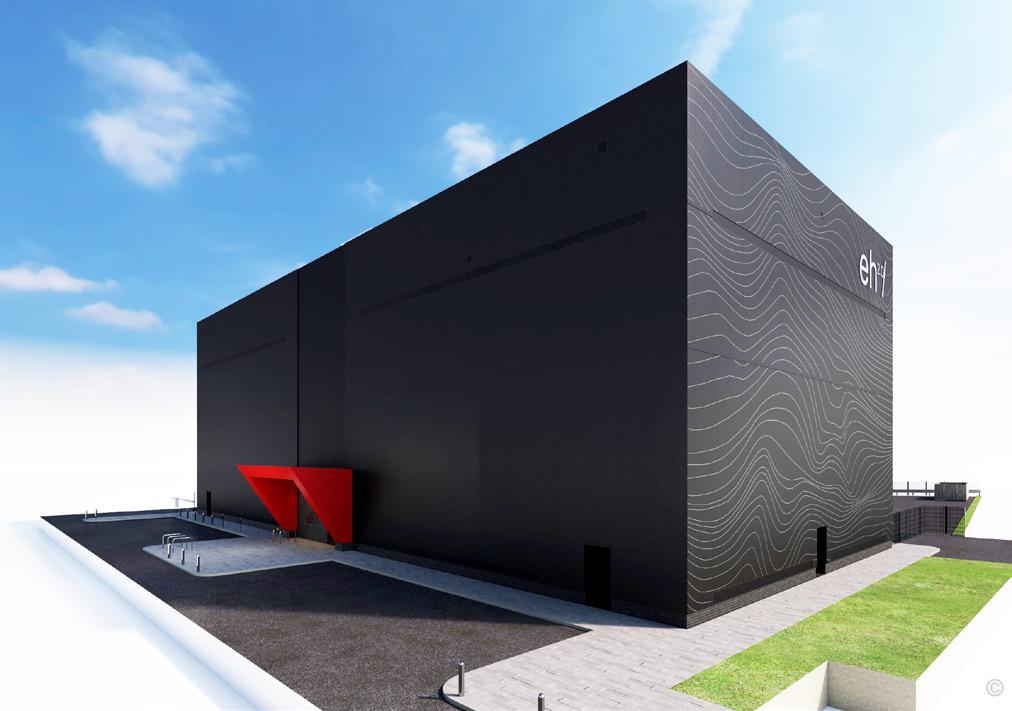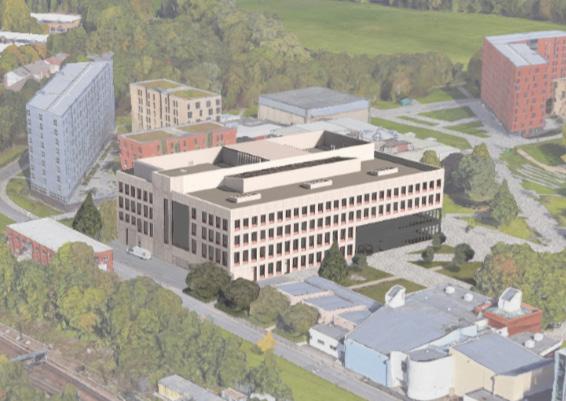
4 minute read
Breaking ground on the future of our campus
BUILDING OUR FUTURE
The University has signed a landmark deal with Salford City Council and The English Cities Fund to bring to life an ambitious masterplan for the Salford Crescent area.
The £2.5bn, 240-acre major regeneration programme will be delivered over the next 20 years and see the University campus become the heart of a major new city district, with significant investment taking place both on the campus and in our neighbouring area.
The area, that will be known simply as Crescent, is one of the largest regeneration opportunities in the country and will see the delivery of around 3,000 homes, commercial and innovation space, improved public spaces and transport links, all with history, heritage and sustainability at the core of the development. The University already has a strong tradition in working with industry in our research and ensuring the quality of our teaching and the employability of our graduates matches industry needs. These plans work to further solidify that expertise, situating our research and teaching facilities alongside our industry partners in a new innovation campus, that will provide unique opportunities for students, alumni and members of our community. Vice-Chancellor Helen Marshall said: “Crescent will create a new city district, rooted in heritage, but with an eye on the future. New university facilities will open-up opportunities to work with industry and continue to enable us to fulfil our mission to deliver a pipeline of talented graduates into key sectors. A new innovation campus will tackle head on the issues facing businesses and society, from digitalisation to energy efficiency, placing exciting new technology and innovation companies alongside our world leading academics.” Salford City Mayor Paul Dennett said: “This ambitious regeneration programme is being driven by a unique public private partnership and provides Salford with a distinct opportunity to create and connect a modern residential neighbourhood, with a quality mixed-tenure, diverse housing offer and deliver a world-class innovation campus, which is aligned with the university’s research strengths, and the region’s future business growth sectors. “This 20-year development programme provides a once in a lifetime opportunity to create a new city district, which is fit for purpose for future generations, creating jobs, much-needed homes and investment that local people will benefit from as we work with our partners to create a

better and fairer Salford for all.”

OUR PROGRESS SO FAR
With the partnership firmly in place, work has already begun on a number of University campus developments.
/ The North of England Robotics Innovation Centre will build upon the outstanding reputation for robotics that already exists at Salford, including our role as the home of the
National Advanced Robotics Research Centre and a founding member of the National Robotics Network (NRN).
Part funded by the European Regional Development Fund, the £13million Robotics Innovation Centre will provide an unrivalled environment to work alongside industry to develop the technologies of the future.
The centre will be the gateway building to the new Innovation
District and provides the University with a significant new presence facing onto Frederick Road. Morgan Sindall
Construction will commence building the 22,580 square foot centre in early 2021. / Energy House 2.0 is a University test facility that will offer small and medium size enterprises (SMEs) and industry partners an unrivalled environment where they can develop future energy saving products.
Energy House 2.0 allows for the evolution of work currently undertaken at our original Energy House facility, which is renowned for playing a leading role in developing expertise on energy efficiency and smart living. Research at Energy
House has enabled key changes to the UK housing market that focus on energy saving initiatives including the roll-out of smart meters.
The facility, currently under construction on Frederick Road campus, will include two large chambers that will allow up to 4 houses to be experimented on at any one time. It can achieve temperatures of between -20˚C to 40˚C and can simulate wind, rain, snow, and solar light. Energy House 2.0 will target a global market, with environmental conditions of 95% of the world’s population able to be replicated in the facility. / The new building for the School of Science, Engineering &
Environment (SEE) will provide a home for the University’s departments of built environment, engineering, computer science, human and natural science and the Morson Maker
Space, to carry out world-leading research and teaching to students, as well as providing industry-based opportunities that better prepare students for life after university.
The four-storey, 15,550 square metre building will incorporate high sustainability credentials, a key element of the
University’s pledge to reduce the environmental impact of the wider masterplan. It will be fully electric powered, supported by 154 roof mounted photovoltaic panels which will provide renewable energy.
Features of the new building will include a wind tunnel, previously located at Salford Innovation Research Centre (SIRC) and high-spec laser laboratories.










